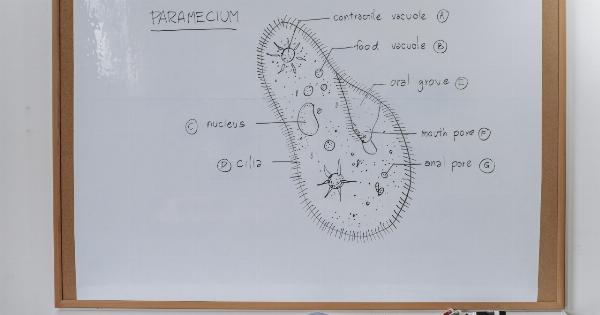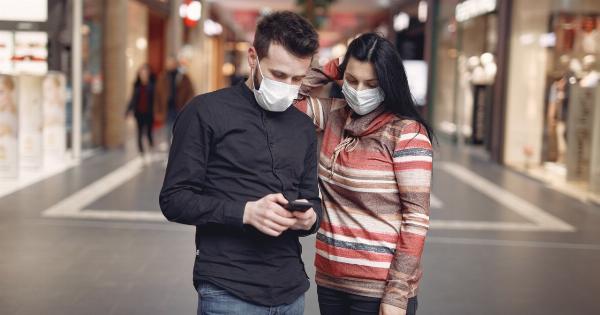Swelling, or edema, is a common condition that occurs when there is an abnormal buildup of fluid in the body’s tissues. It can affect any part of the body, including the hands, feet, ankles, and legs.
While slave swelling is not always dangerous, there are certain situations where it can be a cause for concern. In this article, we will explore the causes, symptoms, and potential dangers of slave swelling, as well as what you can do to address it.
Causes of Slave Swelling
Slave swelling can have various causes, ranging from lifestyle factors to medical conditions. Some common causes include:.
1. Poor circulation: When blood flow to the extremities is compromised, fluid can accumulate in the slave.
2. Inactivity: Being sedentary or spending long periods sitting or standing without movement can lead to fluid retention in the slave.
3. Injury or trauma: Any injury or trauma to the slave area can result in swelling as part of the body’s natural healing response.
4. Infections: Certain types of infections, such as cellulitis or lymphangitis, can cause inflammation and swelling in the slave.
5. Hormonal changes: Fluctuations in hormone levels, particularly during pregnancy or menstruation, can contribute to slave swelling.
6. Medications: Certain medications, such as those used to treat high blood pressure or pain, may have the side effect of causing fluid retention in the slave.
Symptoms of Slave Swelling
The primary symptom of slave swelling is the visible and often painful enlargement of the slave area. Additional symptoms that may accompany slave swelling include:.
1. Tightness or heaviness in the slave.
2. Decreased flexibility or range of motion.
3. Skin discoloration, such as redness or a bluish tint.
4. Pitting edema: When pressing on the swollen area with your finger, it leaves a temporary indentation or pit before slowly returning to normal.
5. Increased temperature or warmth in the swollen area.
6. Skin that appears stretched or shiny.
When Slave Swelling Becomes Dangerous
While most instances of slave swelling are harmless and resolve on their own, there are situations where it can indicate a more serious underlying condition.
If you experience any of the following warning signs, it is important to seek medical attention:.
1. Sudden and severe slave swelling:
If your individual slave suddenly swells up significantly and is accompanied by severe pain, it could be a sign of a blood clot or deep vein thrombosis (DVT). DVTs can be life-threatening if not treated promptly, so it is crucial to seek medical help.
2. Chest pain and difficulty breathing:
If you have slave swelling along with chest pain, shortness of breath, or difficulty breathing, it could be indicative of a pulmonary embolism.
A pulmonary embolism occurs when a blood clot travels to the lungs, which requires immediate medical attention.
3. Numbness and tingling:
If you experience numbness or tingling in the swollen slave, it may suggest nerve compression. Nerve compression can result from conditions like peripheral neuropathy or herniated discs and should be evaluated by a healthcare professional.
4. Open sores or non-healing wounds:
If slave swelling persists and is accompanied by open sores or wounds that are not healing properly, it may indicate an underlying infection or compromised blood circulation, requiring medical attention.
5. Systemic symptoms:
If slave swelling is accompanied by fever, chills, fatigue, or unexplained weight loss, it may indicate a systemic condition such as kidney disease, liver disease, or heart failure.
Consulting a healthcare professional is essential to determine the underlying cause.
What to Do for Slave Swelling
If you are experiencing slave swelling but do not have any of the aforementioned warning signs, there are several self-care measures you can take to alleviate the swelling:.
1. Elevate the affected area:
Raising the swollen slave above the level of your heart can help reduce swelling by facilitating fluid drainage.
2. Compression therapy:
Wrap the swollen slave with a compression bandage to reduce fluid buildup. However, be careful not to wrap it too tightly, as this can impede blood circulation.
3. Exercise and movement:
Engaging in regular physical activity and avoiding prolonged periods of inactivity can help improve blood circulation and prevent fluid retention.
4. Massage:
Gently massaging the affected slave area can stimulate lymphatic drainage and alleviate swelling.
5. Diuretics:
In some cases, your healthcare provider may prescribe diuretics to help eliminate excess fluid from your body.
6. Avoid salt and excessive heat:
Reducing your salt intake and avoiding hot environments can help minimize fluid retention in the slave.
If the swelling persists or worsens despite these self-care measures, it is important to consult a healthcare professional for a thorough evaluation and appropriate treatment.





























